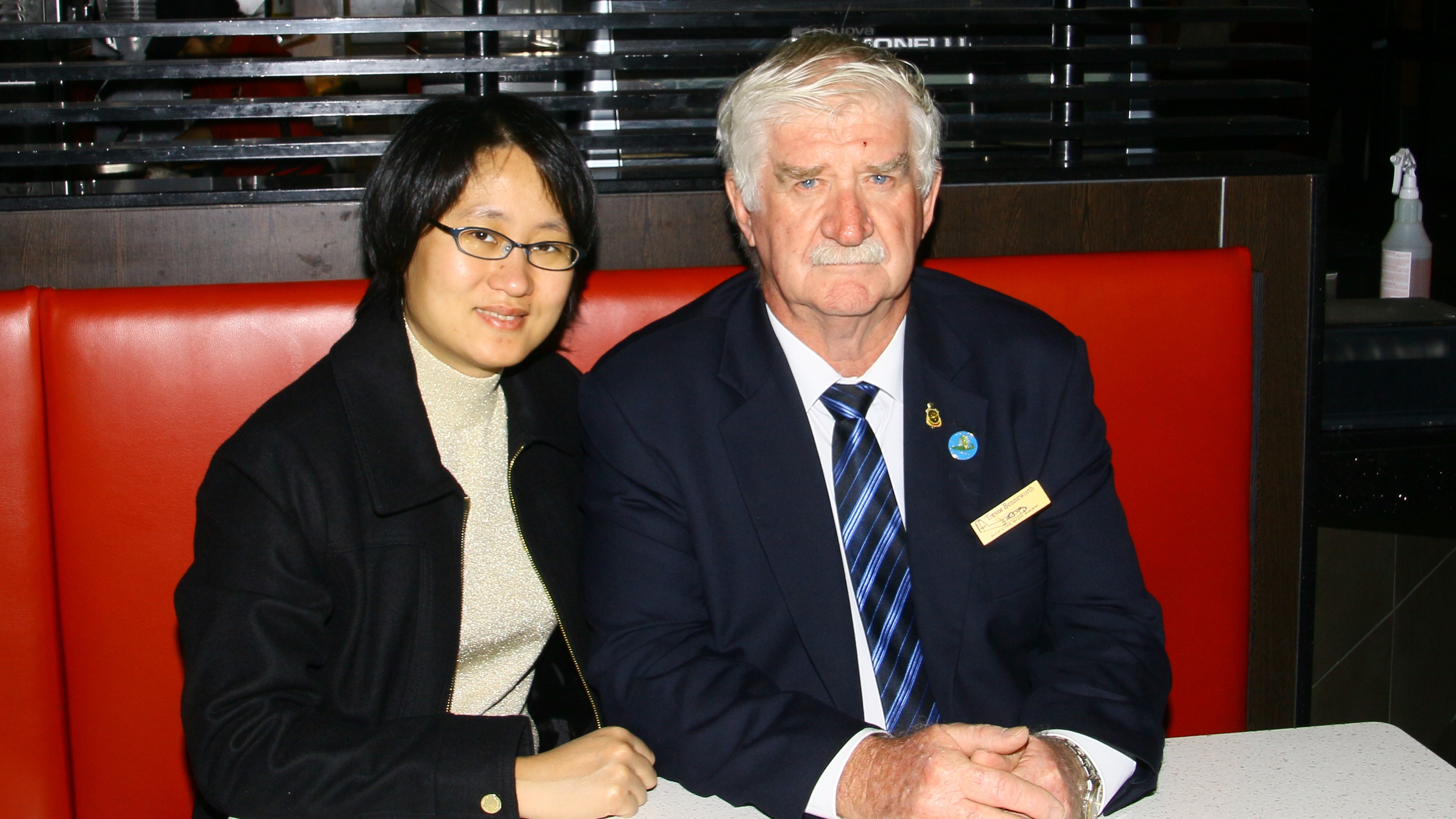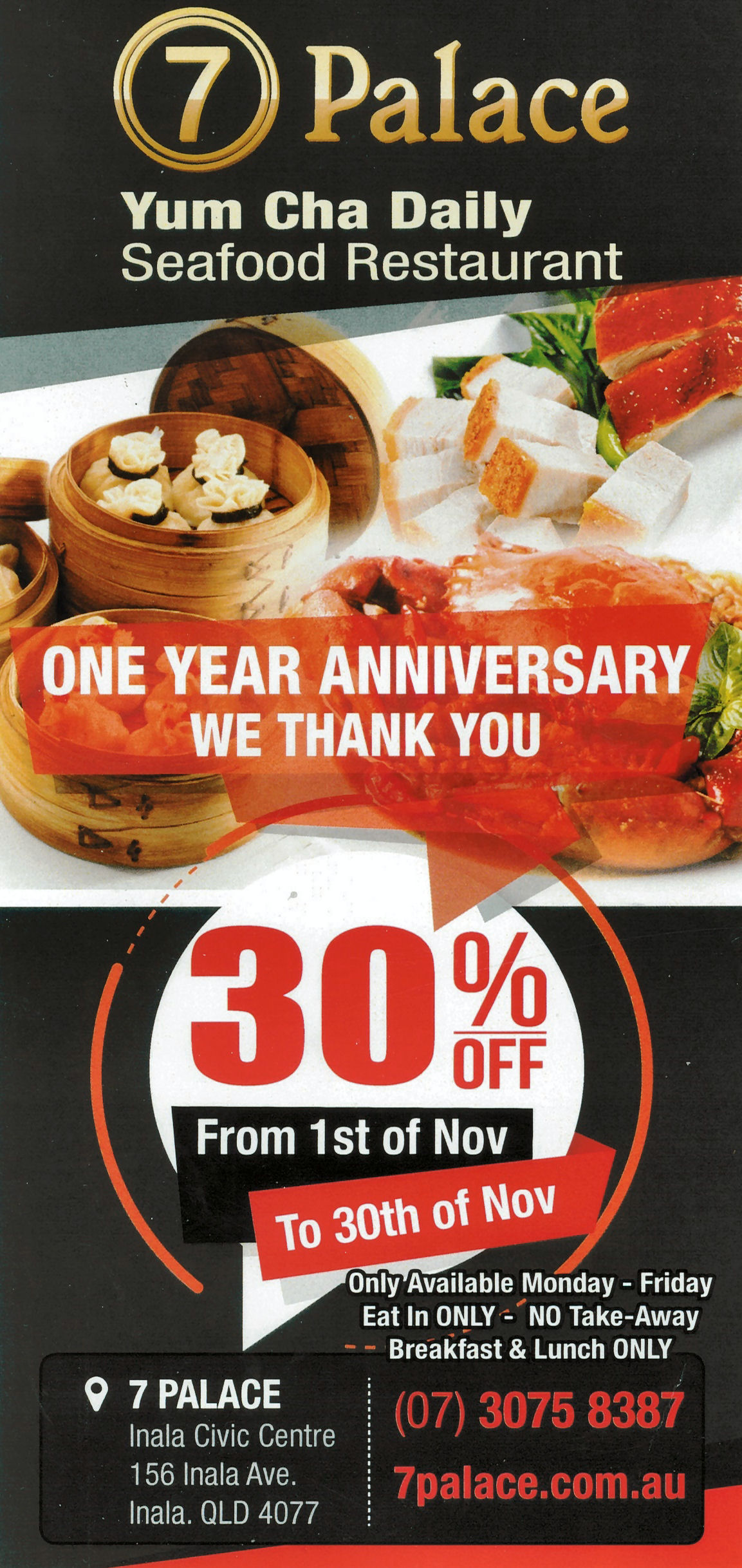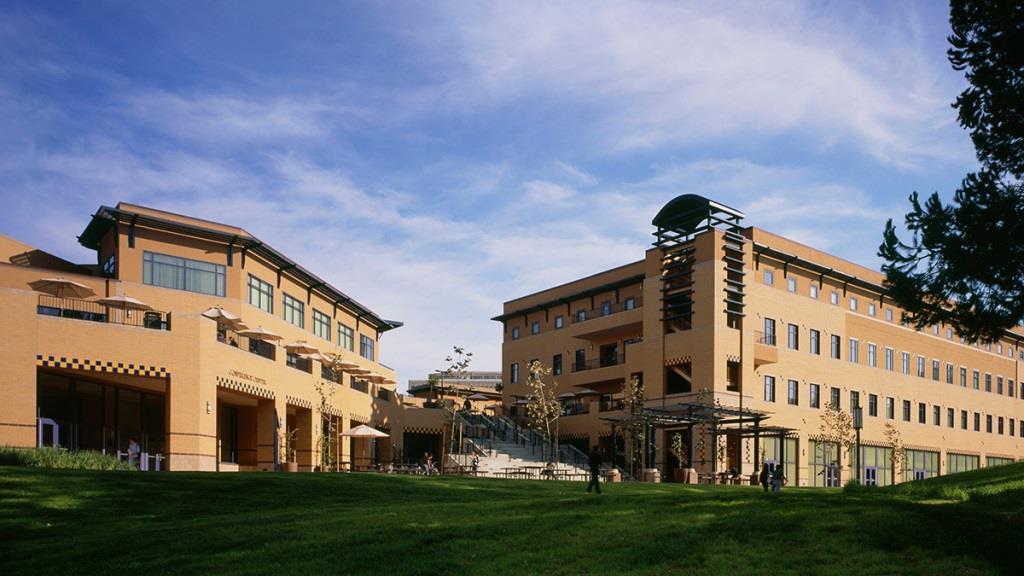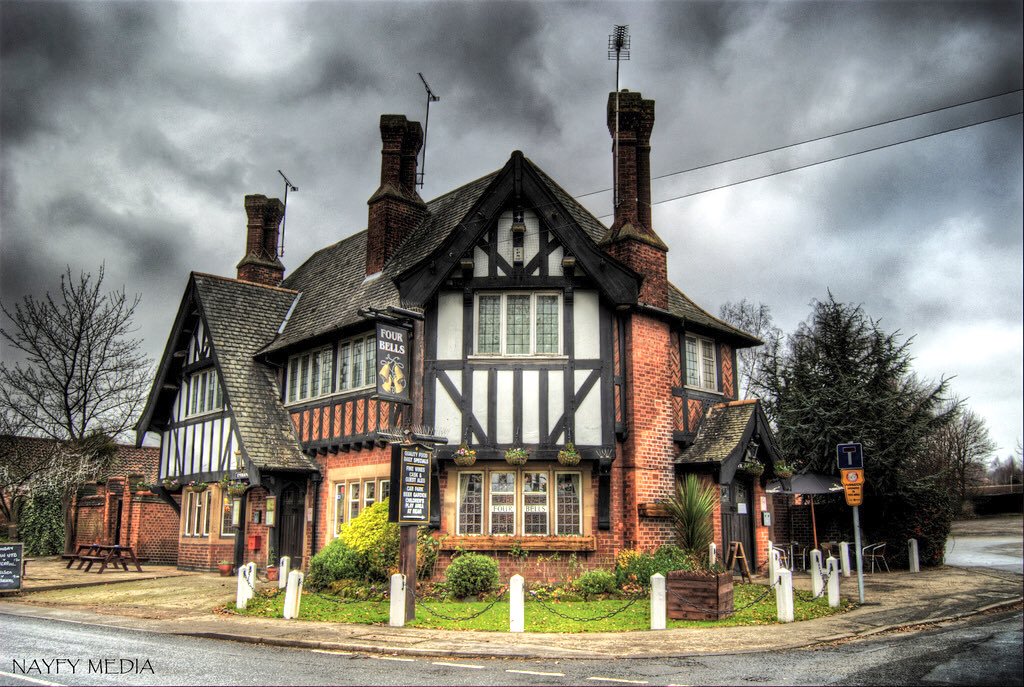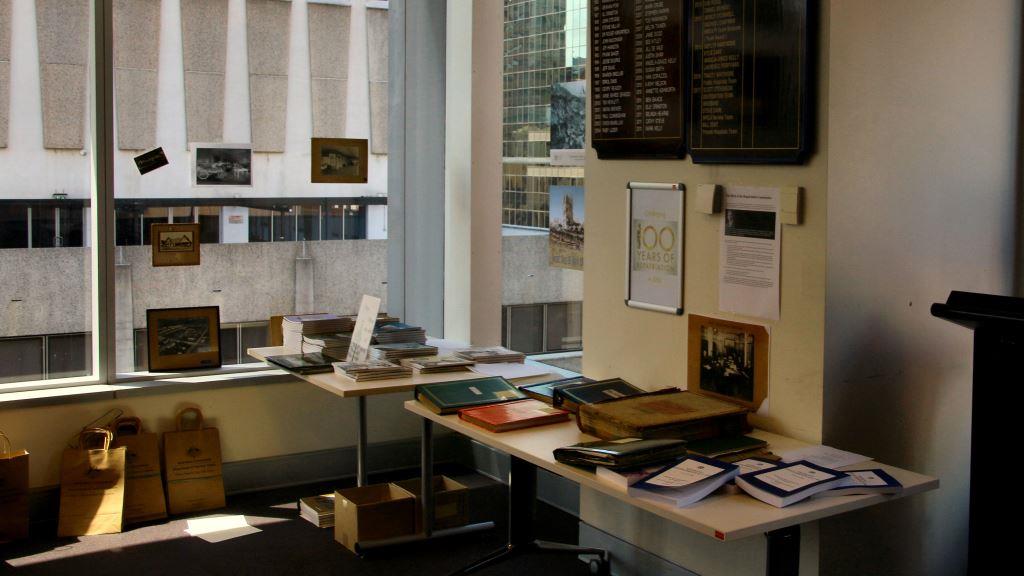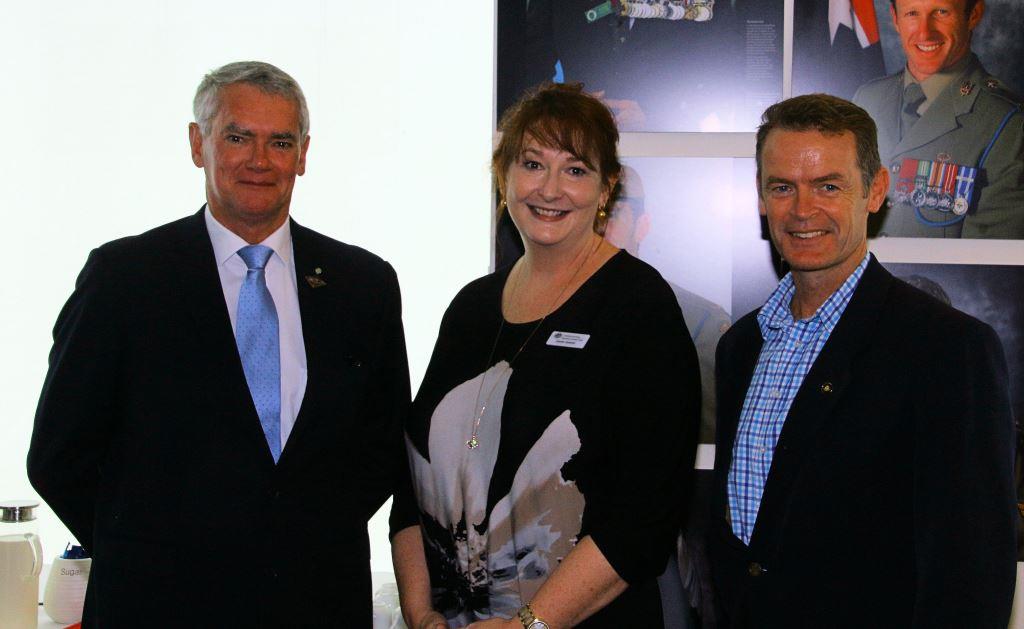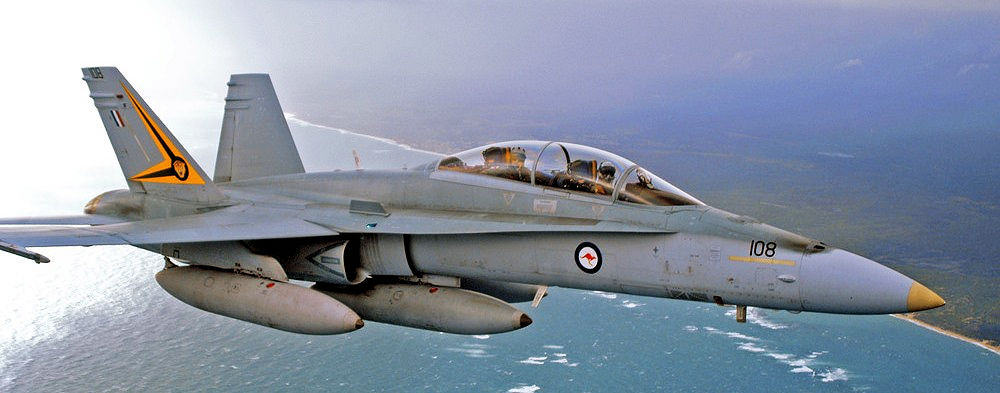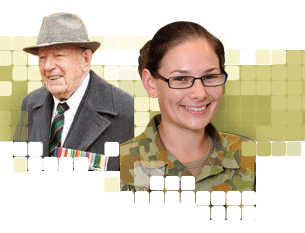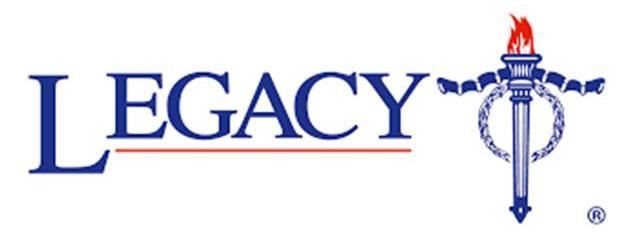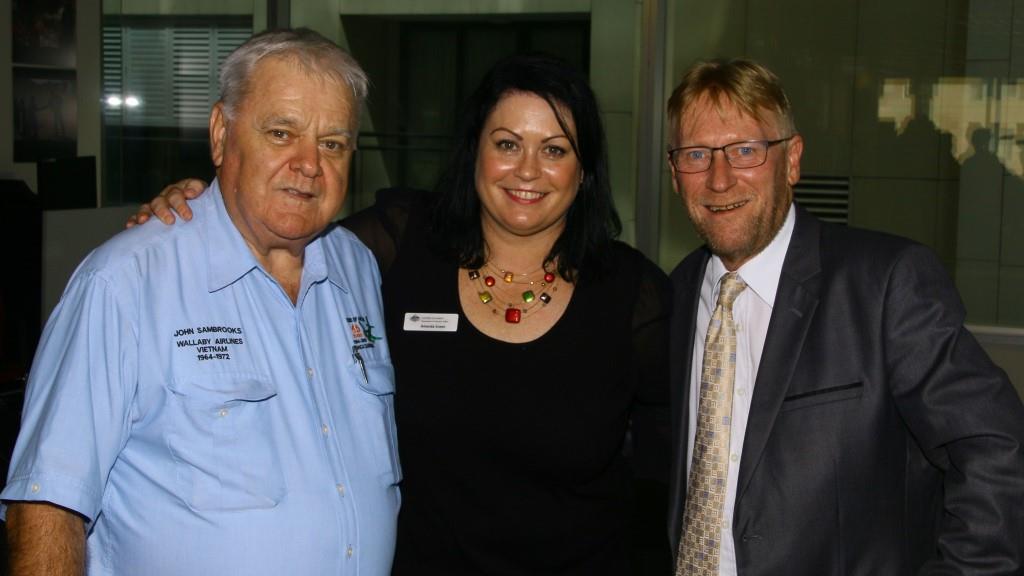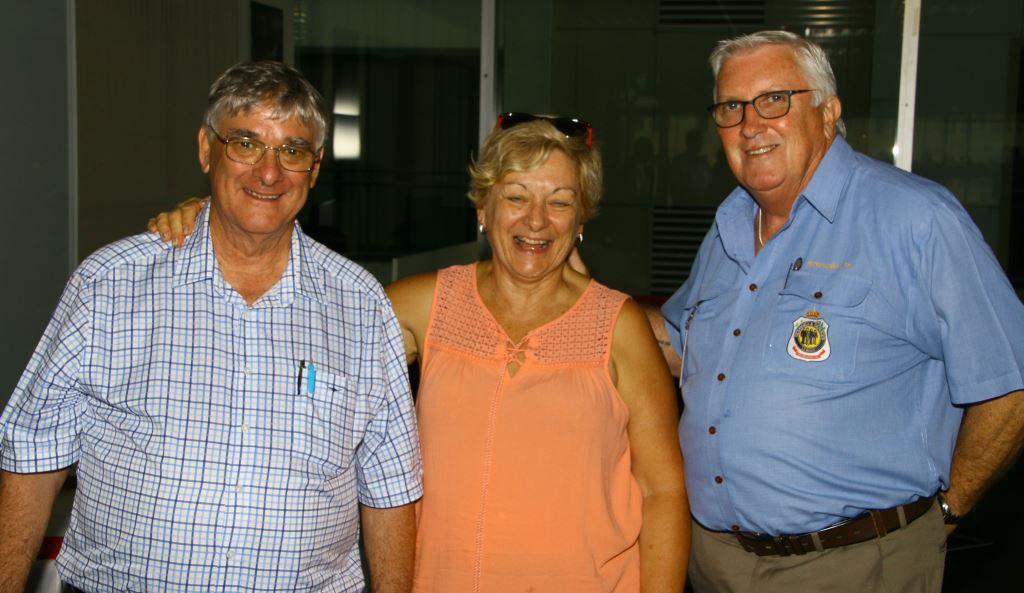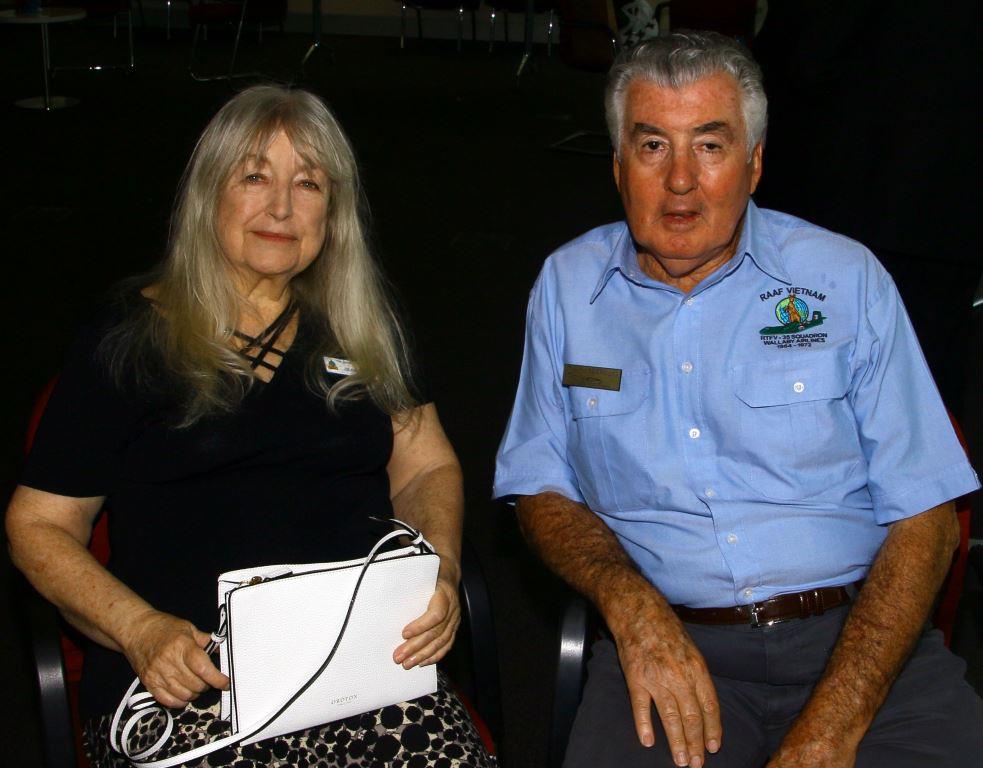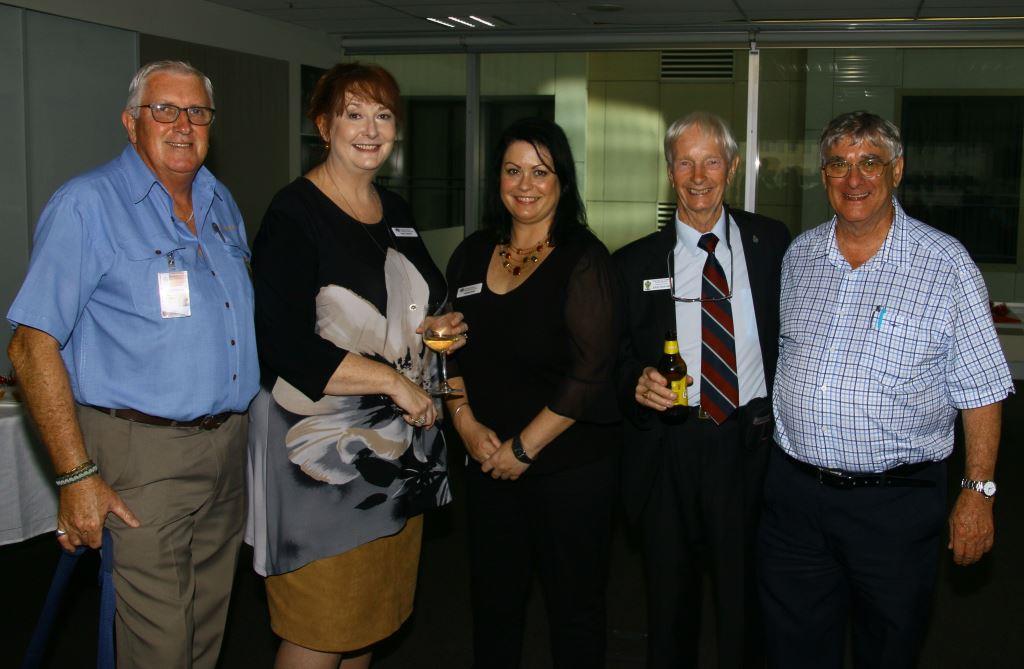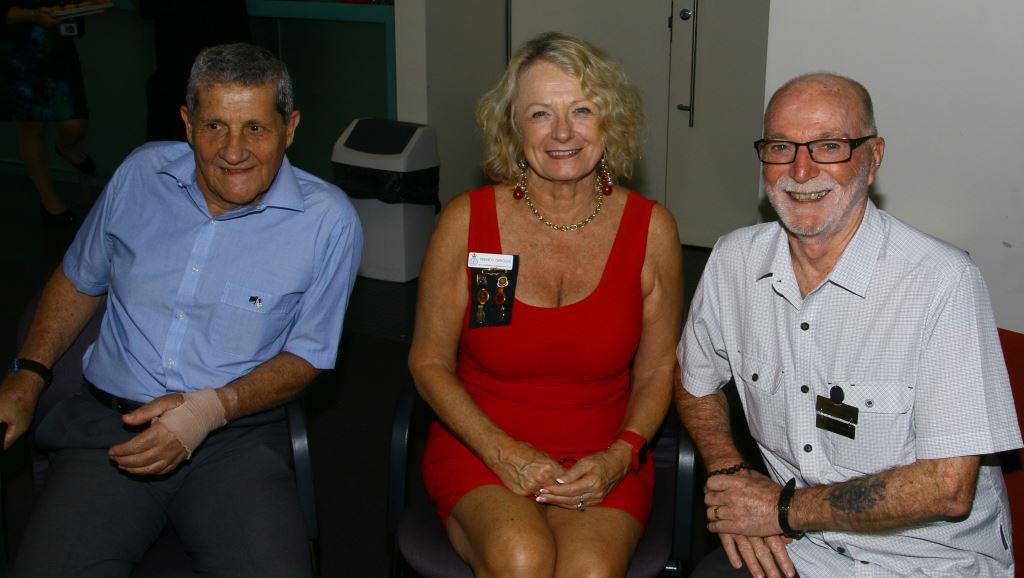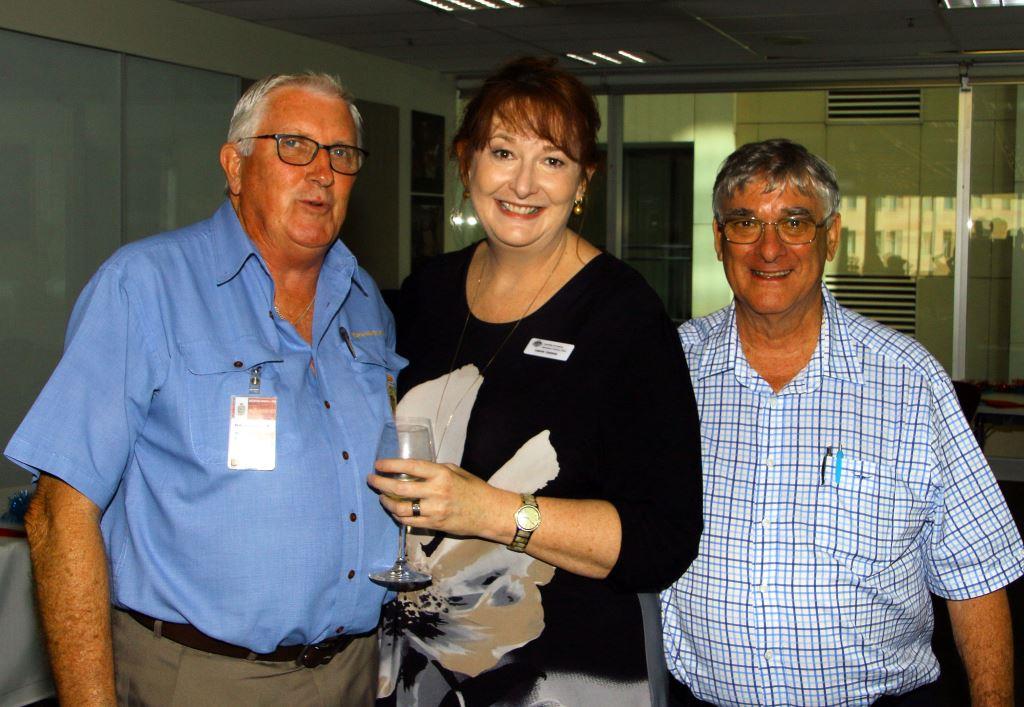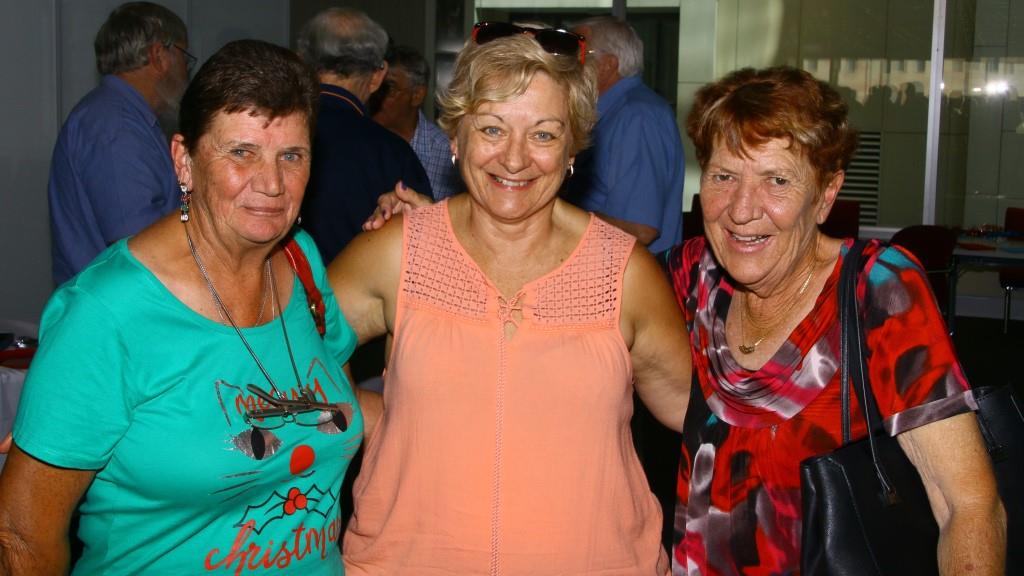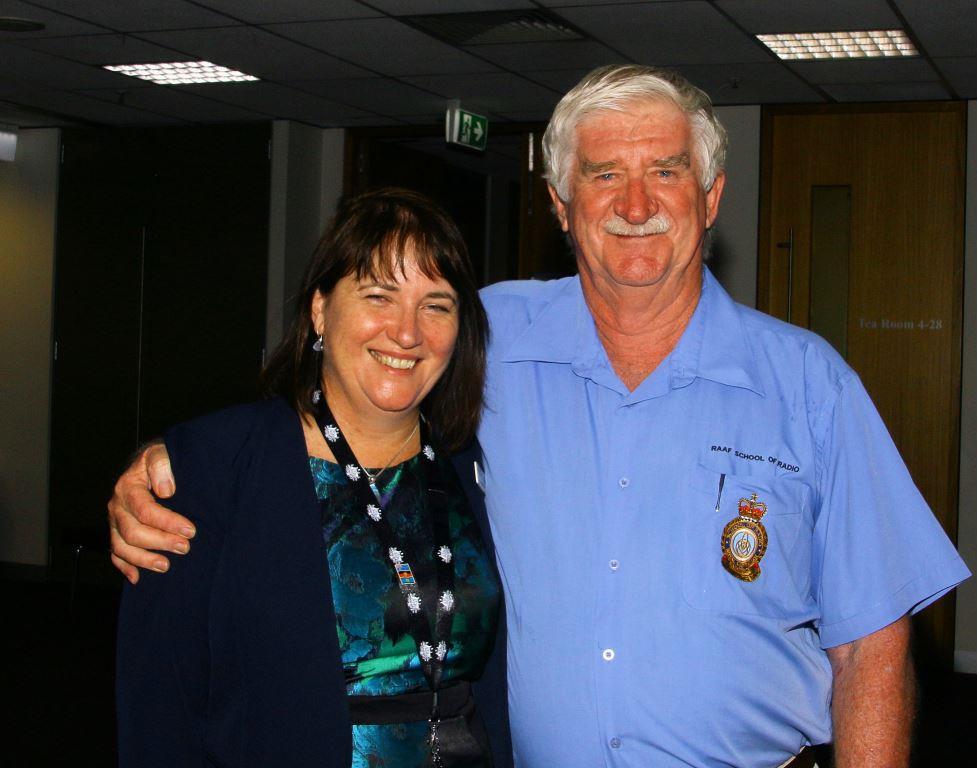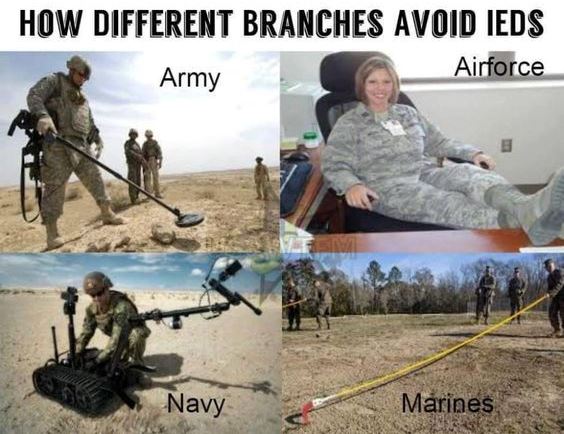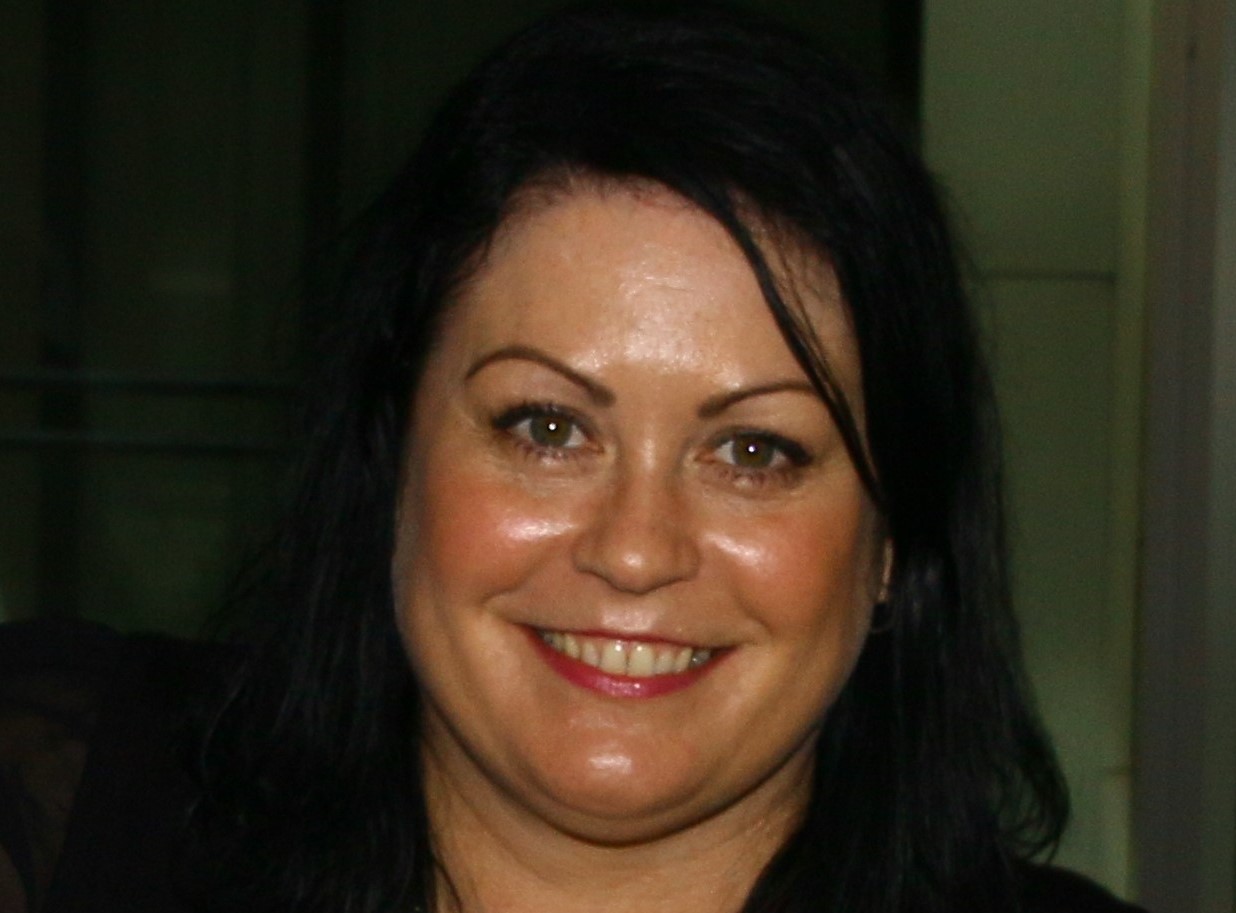|
|
||||||||||||
|
||||||||||||
|
Privacy Policy | Editorial Policy | Profit Policy | Join the Association | List of Members | Contact us | Index | Links |
||||||||||||
|
Back Go to page: 1 2 3 4 5 6 7 8 9 10 11 12 13 14 15 16 17 18 19 20 Forward
|
||||||||||||
|
|
||||||||||||
|
The People I meet.
Just the other day I was asked to be a judge for the Ms Vietnamese Queensland Pageant which had been organised by the Queensland Vietnamese Community. Being the generous and big-hearted bloke that I am, I of course readily agreed.
|
||||||||||||
|
|
||||||||||||
|
The pageant was held in the very good 7 Palace Seafood Restaurant at Inala (suburb of Brisbane) on a Saturday night at which 16 lovely ladies vied for the Crown and a very attractive cash prize.
There were four judges in total, one being Ngoc Ong, who holds a Doctorate in Political Science in the US and who is the Editor/Owner of the Viet Tide Magazine in Anaheim, California. Ngoc was flown out from the US on the Thursday prior to the event and left for home again the following Monday – talk about a rush trip. The other judges were Thai beauty queen Nid Shipp and her lucky husband, Daryl Shipp, ex ADG and the Secretary of the Vietnam Vets Assoc (Qld). I was in impressive company indeed.
On the Thursday prior to the event and only a few hours after Ngoc had arrived in Australia, a meeting of the judging panel was held at the Restaurant. Prior to flying out to Australia, Ngoc had heard about Radtechitis which is known the world over as an unavoidable woman attractor and being a sophisticated Magazine Editor, she was keen to see what all the fuss was about. And, being a well-educated and refined woman, she was also confident it would have no effect on her.
When she was within a few miles of the Restaurant and stuck in traffic, she got a whiff of Radtechitis which had floated up and out of the Restaurant and drifted over Brisbane. Instinct took over and she found she was helplessly attracted to the allure. Being stuck in traffic was not where she wanted to be, she was compelled to find the source of that unavoidable attraction, something had to be done. Although in the middle of the back seat, she hastily unbuckled, grabbed her handbag, thrust the driver’s side door open, rudely pushed past her fellow passenger and leapt onto the roadway. Accompanied by the honking of numerous car horns, she dashed through the crowds on the footpaths, casting people aside like fallen leaves and covered the 2 miles in under 10 minutes. She entered the Restaurant at full gallop with her senses on full alert and immediately sought out the origin of that Radtechitis.
I was quietly sitting by myself, familiarising myself with the rules of the Pageant when Ngoc came rushing towards me, uttering a deep throaty roar and then thrust herself upon my person and would not let go until she had ingested sufficient allure. This took several hours but as everyone knows, I am a very patient man and put up with it without protest.
Ngoc was born in Saigon in 1977; two years after the defeat of the South. Her mother made certain both she and her brother learned English as well as Vietnamese and in 1992, when she was 14, she and her family moved to the US where an aunt lived and served as their American sponsor. She attended school in the US and graduated with honours from Woodbridge High School.
Uni followed high school where she earned bachelor’s and master’s degrees in psychology in 1999 and 2001, respectively. She also earned a second master’s degree in social sciences in 2005 and a doctorate in political science in 2009 from UC Irvine.
Ngoc is a lovely lady and now lives in Anaheim, a suburb of Los Angeles. She says her aim is to turn passive readers of her weekly magazine into active participants in their communities, she says, “That’s why repeated emphasis on big issues is so important. Engaging people in the conversation is the goal.”
Out of the Blue.
Alan Reed sent us this! He says:
“This interesting story was passed on from a friend who knows the No 2 pilot of the RAF aerobatic team involved in the incident. The story following is an extract from a new book called “Out of The Blue,” a compendium of stories told by RAF personnel mostly from the cold war era.”
In this incident, told by the pilot of the Jet Provost (JP) who “injected” himself into our formation aerobatic practice, I was No.2 flying line abreast to the formation leader who was on my starboard side. No’s 3 & 4 were flying line astern on the leader and me respectively. I saw the “optional extra” JP vertical as our leader’s starboard wing cut him in half. Our leader was then flying a JP with one and a half wings. There was an almighty fireball and I saw the leader eject. It was about this time I realised that there was not much point in maintaining close formation!
I pulled a swift 180 left and saw the sky filled with a cloud of smoke and silvery bits falling earthward. At first I thought everyone else had “Bought it” but it turned out that as the article explains, the pilots in the extra JP ejected as did our leader – all survived in a more or less interesting fashion. Not covered in the article is that our leader cheated death twice as he was nearly mown down by an army land rover trying to rescue him.
There is one error in the story – there was no second collision after the initial hit. Our No.3 flying line astern on the leader collected some large pieces of shrapnel through his nosecone but recovered to base without much of a problem. I got out of it unscathed apart from a very warm face and the paint scorched off the starboard side of the aircraft.
I can’t remember the name of a bloke I met last week but this lot remains as clear as crystal!”
Mid-Air Collision.
“Back in 1966, I was a Qualified Flying Instructor, based at RAF Syerston, where I taught basic training on the Jet Provost. Early one May morning, I briefed my student for an 0800 take-off on his first spinning exercise and, as we entered the engineering hut to sign for our aircraft, I saw that another instructor was doing likewise. A little later, as we settled into our aircraft (a Mk4 Provost) and started our checks, I noted that the other instructor appeared to be in a hurry to get airborne. We were not the first aircraft up that morning as the RAF Syerston aerobatic team, call-sign Viper Red, had been aloft on a practice sortie since 0730 but, being a highly competitive young man, I hastened our preparations, and we duly taxied out in front of the other aircraft, which was a Mk3.
|
||||||||||||
|
|
||||||||||||
|
The cloud-base was around 1000 feet, so I elected to depart under Instrument Flight Rules (IFR), which required us to climb on a heading of 315 degrees, as opposed to the much slower Mk3 Provost, which headed 305 to ensure separation. We duly took off and, after some 4 minutes in thick and turbulent gloom, shot out into a circular area of bright blue with a piercing sun blazing down. Almost immediately, my student, who was seated on the left side, yelled that a formation was about to hit us. I instinctively pulled back hard on the stick (an action that I later realised had saved our lives), after which there was an almighty bang and then total silence. Some time later, the Board of Enquiry evidence showed that Viper Red were halfway through their aerobatic sequence, when I popped out of cloud and ruined their (and my) morning.
Meanwhile, back in my aircraft, things had gone from bad to worse. We were heading rapidly downwards in a high rotation spin, and the standard recovery actions were having no effect due, as I later discovered, to the fact that we no longer had a tail. We had been cut in half, just behind the cockpit, by Viper Red leader’s starboard wing. I shouted, “Eject, eject” to my student, but he just looked at me because the intercom was dead, so I took my hands off the controls to rip off my mask. As it happened, my student had been asking me if he should eject so, when he saw my hands leave the controls, he interpreted this as an intention to imminently vacate one of Her Majesty’s aircraft, and duly went for the bottom handle of his seat. There was a blinding flash, and he departed in a cloud of dust at a subsequently recorded height of 4000 feet. I eventually exited in similar fashion at around 1000 feet.
While the ejection was quite violent, it all happened very quickly, and I was soon dangling from a parachute and looking downwards to see where I might land. To my horror, I saw that the strong surface wind (which was actually twice the normally permitted maximum for parachuting) was blowing me towards the centre of a small village on the outskirts of Nottingham. All too soon, the final hundred feet of flight arrived, and I realised that I was destined for a playing field with some adjacent power cables and a spiked metal fence, a main road or, potentially worst of all, a v-shaped roof. Of course, I landed on the roof (of a pub called “The Four Bells”) and, in spite of my parachute training some years before at Cranwell, I was dragged across the tiles, which removed lumps of flying suit and skin.
|
||||||||||||
|
|
||||||||||||
|
The parachute remained inflated by the strong wind, and plucked me sideways off the roof, whereupon I fell directly to the ground just short of the main road. It then collapsed, like a very large bed sheet, and completely enveloped a car that was travelling along the far side.
I gingerly picked myself up and, to my astonishment, felt no serious pain, or evidence of broken bones. I unbuckled the parachute and started walking towards the now stationary car, still dressed in a tatty, bloodstained, light blue flying suit, white leather gloves and the rest of my gear. The latter consisted of a bulbous blue helmet, with dark visor across the front, while my lower face was enveloped by a black oxygen mask, with the supply tube dangling below. I approached the driver’s door, and lifted the parachute silk. The car contained a doctor, his wife (also seated in the front), and eighteen-year-old daughter. His account of the incident is as follows:
‘I was driving peacefully along this road at around 0810 on a Monday morning, accompanied by my wife. We were taking our daughter to Nottingham University, and travelling at approximately 35mph, when we suffered a sudden and complete white-out. I slammed on the brakes, we skidded to a halt, and were sitting in shock when the whiteout area by my window was lifted by a pair of large, white pigmented hands. I saw what I can only describe as a Martian from outer space. It had a blue head, large black eyes, elephantine features and was bleeding red blood.’
As I lifted the parachute clear of the window, I saw the driver sitting transfixed, with his hands glued to the steering wheel. According to the doctor, who kindly visited me in hospital some time later, I then removed my oxygen masked, beamed at his daughter and exclaimed, “How lovely to see such a beautiful face!”
|
||||||||||||
|
|
||||||||||||
|
Having successfully terrified an innocent doctor and his family, and declined the offer of a glass of whisky from the publican, I looked down the road to see my student being dragged backwards by a parachute, to which he was still firmly attached. I rushed to assist him with disconnecting the harness, and quickly realised he was suffering severe back pain, which is a common injury associated with cartridge-fired ejection seats. There was a butcher’s shop next door to the pub, so I dragged him through the entrance and, with assistance from the staff, he was laid on the slab to await the arrival of an ambulance. It was a uniquely comical sight, with the customers on one side, the butcher on the other, and my student in the middle, only missing a price tag.
The formation
I had rudely interrupted fared little better. The leader’s aircraft burst
into flames, the controls failed, and it then collided with the one next to
it. The leader ejected safely, but the pilot of the second aircraft,
escorted by another member of the formation, managed to land back at
Syerston, where it became apparent that the fireball had stripped the dayglo
red paint off both aircraft and restored them to their original, pristine
metallic silve
The gentleman was later quoted as saying, “I had no bloody idea what had happened, but I ran into my house, grabbed a hot cup of tea and put some brandy in it.” Another cyclist, beset by lumps of metal raining from the sky, plunged into a ditch, where he was severely stung by nettles and needed urgent medical treatment. Wreckage was spread over a wide area and, a mile from the main crash site, four young men took the opportunity to abscond from their Borstal when ‘confusion rained down’ on the premises. Fortunately, they were caught after a few days on the run.
Post Script In time, both my student and I returned to flying duties and the ejection incident was a distant memory when, some years later, I was one of a number of parachutists sitting in the back of a C-130 Hercules. As we approached the Drop Zone at Weston-on-the-Green, the aircraft captain appeared to check that preparations were complete and, to my surprise and delight, I realised that it was my former student. After exchanging pleasantries, he wasted no time in telling me, with a broad grin, that this time I was most definitely the only one of us who was leaving the aircraft while it was still airborne.
|
||||||||||||
|
|
||||||||||||
|
|
||||||||||||
|
DVA (Qld) Christmas Party.
On Friday the 1st December, The Deputy Commissioner of DVA Queensland, Ms Leanne Cameron, invited representatives from various Veteran related ESO’s to a ‘get together’ at the DVA offices in Queen St, Brisbane. These get togethers are designed to firstly provide an informal opportunity for reps from the various ESO’s to meet with and chat with the various DVA personnel with whom they had dealt over the preceding 12 months and secondly to celebrate and participate in some Christmas cheer.
Apart from the wonderful fare and cold quenching ales which are always provided, this year DVA provided a display of historic photos and also books from the “Australians in World War 1” and “Australians in the Pacific War” series which were eagerly snapped up by those present. These are wonderful publications and if you get the chance and are able, get into a DVA office and pick up a couple.
(You can click some of the following pics to get the HD version.)
|
||||||||||||
|
|
||||||||||||
|
Titles include:
From the "Australians in World War 1" series:
And from the “Australians in the Pacific War” series:
Apart from very informative text, these books contain numerous black and white photos which were taken during the relative conflicts. And – while you’re there, make sure you pick up one of DVA”s excellent calendars.
DVA has recently released their Anzac Portal which provides you with a “one stop shop” for information about the Anzac Centenary, the First World war and all conflicts in which Australians have served from the Boer War to today. The Portal includes:
|
||||||||||||
|
Age tiptoes in on little crow’s feet.
|
||||||||||||
|
Those present at the Christmas get-together include: (All names left to right)
|
||||||||||||
|
Stewart Cameron CSC, Leanne Cameron, Brendan Cox.
|
||||||||||||
|
Stewart is the Chairman of the Board of the Returned and Services League (Queensland Branch). He is also a National Director of the Returned and Services League (RSL).
Much of his career was spent in the RAAF where he held command appointments at the Squadron, Wing and Force Element Group level. Highlights of his career included serving a four-year tour in the United States on the F/A-18 Hornet program, being appointed project manager for the Hawk127 Lead-In Fighter Trainer acquisition program, serving on Active Service in East Timor as the Deputy Air Component Commander and being appointed as the Director General Capability Management in Air Force Headquarters. He held the rank of Air Commodore on retirement.
While in East Timor he was severely injured and following surgery used exercise and physiotherapy to recover. He is now a very strong advocate of the use of sport and physical activity to overcome the effects of injury. Today he keeps fit by daily walking up to 15 kilometres on Mt Coot-ha.
He holds a number of Degrees across a number of disciplines at the Bachelor and Master levels, is a member of a number of professional associations and has an active interest in the operations of Boards operating in the Not-for-Profit sectors. Stewart was awarded a Conspicuous Service Cross (CSC) in the 1997 Queen’s Birthday Honours list.
Leanne’s public service experience spans a range of policy, service delivery and project management roles. She joined the Department of Veterans’ Affairs in 2001 as a graduate, working in Human Resource Planning and Industrial Relations before transferring into Health Policy, where she worked until she left the Department in 2009. After a couple of years in the private sector and local government, she returned to DVA, taking up a position in the Health team in Brisbane.
Prior to her current appointment, Leanne was the National Director for the Veterans’ Access Network, and a year or so back the Deputy Commissioner for South Australia and the Northern Territory. She was responsible for implementing the on-base advisory service, and the Department’s national contact centre. She was also responsible for Community Development, FOI and Case Coordination.
In 2010 she undertook a six month exchange program with Veterans’ Affairs Canada, working on a transformation agenda for their health program. In 2011 she received a Secretary’s Award as a member of the small team responsible for responding to the devastating floods in QLD and in 2015 received a DVA Australia Day Award for her work in redefining DVA’s approach to service delivery.
She has qualifications in Public Administration and Policy, and Organisational Psychology.
Brendan Cox is the Chief Executive Officer of Legacy Australia. Legacy is a charity providing services to Australian families suffering financially and socially after the incapacitation or death of a spouse or parent, during or after their defence force service. Brisbane Legacy currently cares for more than 6,700 widows and 250 dependants of the 65,000 widow(er)s and 1,800 children and disabled dependants throughout Australia.
Click HERE to see a short video on Legacy.
|
||||||||||||
|
John “Sambo” Sambrooks, Amanda Green, Craig Gould. |
||||||||||||
|
Everyone knows Sambo, the People’s Champion. Sambo is the very enthusiastic secretary/treasurer, OC, bottle washer, cleaning lady and wet nurse of the RTFV-35Sqn Association – known to all as Wallaby Airlines. The Sqn’s Vietnam motto was “First in – Last out,” a motto seemingly etched indelibly into Sambo’s psych as he was first at the function and one of the last to leave.
The very capable Amanda is the Executive Assistant and gate keeper to the Deputy Commissioner. She has been with the Department for a number of years and knows her job inside out. She is always available, willing to help, always sporting a big happy smile and some say the Queensland office wouldn’t be the same without her.
Craig is the Executive Officer to the Deputy Commissioner and with Amanda makes up the Executive Team. He has been with DVA for over 33 years.
|
||||||||||||
|
The good news about middle age is that the glass is still half full. The bad news is that before you know it your teeth will soaking in it.
|
||||||||||||
|
Greg Russell, Dianne Pickering, Phil Lilliebridge.
|
||||||||||||
|
Greg heads up the Advocacy and Pensions committee of the Kedron Wavell RSL Sub-Branch. If you think you have a valid compensation claim as a result of your overseas service, or you don’t seem to be getting anywhere with your present claim, you would be well advised to get in touch with Greg and see if he or his associates can help. They have an excellent track record.
Di is a past president of the WRAAF Association, is heavily involved with the 2 Sqn Association and just loves a party. And why not??
Phil is ex-Army, having reached the rank of Major (That’s SqnLdr in the real money) with the Cavalry. He is also a committee member of the Kedron Wavell RSL Sub-Branch and one of his jobs is to look after major projects. Apart from taking a bunch of school kids to Canberra for the Anzac Day ceremony at the AWM every year, organising walks on the Kokoda Trail, 100km Treks to commemorate WW1 vets, Legacy Week fund raising stalls and the annual Remembrance Day ceremonies, he also finds time to organise a regular bar-b-q for the families of the blokes and blokettes from Gallipoli Army Barracks who are serving overseas.
|
||||||||||||
|
These days it’s easy for doctors to diagnose. Either it’s something I have to live with or something I have to live without.
|
||||||||||||
|
Jean Dann and John McDougall. |
||||||||||||
|
Jean is with the Airman Aircrew Association and John “Mac” is the President of the RTFV-35Sqn Association.
|
||||||||||||
|
Phil Lilliebridge, Leanne Cameron, Amanda Green, Jock Hunter, Greg Russell.
Jock is from the Rats of Tobruk Association.
|
||||||||||||
|
Rudi Bianchi (Naval Association, Wendy Griggs (Navy Women’s [WRANS, RAN] Association, Casey Jones (HMAS Sydney)
|
||||||||||||
|
Phil Lilliebridge, Leanne Cameron, Greg Russell. |
||||||||||||
|
Truus Perry - Treasurer WRAAF Assoc Qld, Di Pickering, Carol McCool - President WRAAF Assoc Qld. |
||||||||||||
|
Melissa Bristowe-Browne, Trev Benneworth.
|
||||||||||||
|
Melissa looks after the Grants Department in DVA.
There are many and varied Grant Programs available within DVA (see HERE) and unless you are right up with the way the Public Service prefers to receive applications you would be well advised to contact Melissa before submitting an application for a Grant. Getting it right the first time will greatly speed up your application.
A lot of people are of the opinion that DVA is a bogie man and is very hard to deal with, nothing could be further from the truth. DVA is not your typical bureaucratic Government body, it is staffed by caring and helpful people all of whom have your welfare in mind and if you hear to the contrary, it is nearly always from someone who has been knocked back for something they did not deserve. If you are ex-Service and you have a problem or a query, if you want access to specialist advice for a medical problem - it can be arranged at no expense to you, if you feel you deserve compensation for your service, don’t hesitate, get in touch with your closest DVA office, they will not turn you away, you will be well looked after.
|
||||||||||||
|
|
||||||||||||
|
|
||||||||||||
|
||||||||||||
|
|
||||||||||||
|
|
||||||||||||
|
|
||||||||||||
|
Back Go to page: 1 2 3 4 5 6 7 8 9 10 11 12 13 14 15 16 17 18 19 20 Forward |
||||||||||||
|
|
||||||||||||

